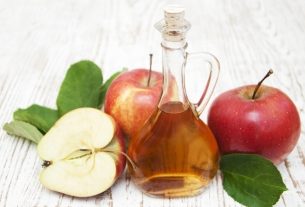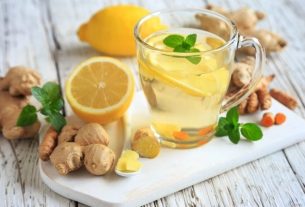Echinacea is a medicinal plant, also known as coneflower, purple or rudbéquia, rich in alkamides, flavonoids and polysaccharides, with anti-inflammatory, antiallergic and immunomodulatory properties, and is therefore widely used as a home remedy in the treatment from flu and colds, relieving runny nose and cough,
The scientific name of this plant is Echinacea spp. and the best known species are Echinacea purpurea e Echinacea angustifoliaand the parts normally used are the root or leaf, which can be used in the form of tea, compresses or capsules.
Echinacea can be found in herbalists, health food stores or compounding pharmacies, but should be used under the guidance of a doctor or other health professional who has experience with the use of medicinal plants.

What is it for
Echinacea has several health benefits, the main ones being:
1. Strengthen the immune system
Echinacea is rich in alkamides, polysaccharides, glycoproteins and caffeic acid derivatives, with anti-inflammatory and immunomodulatory action, which help to strengthen the immune system, preventing and helping to combat infections of the respiratory system, such as flu, colds, sinusitis or otitis, for example.
Furthermore, this medicinal plant can also help fight chronic urinary or pelvic infections, as well as candidiasis or cold sores.
2. Fight inflammation
Echinacea has anti-inflammatory properties that help fight inflammation and swelling, and can be useful to help treat toothache and gum pain, for example.
3. Help with skin healing
Echinacea has anti-inflammatory and antibacterial action and can be used on the skin to accelerate the healing of superficial wounds or help fight skin infections, such as abscesses or boils.
Furthermore, this plant can also be used for skin problems such as eczema, burns or poisoning such as spider or snake bites.
4. Decrease anxiety
Some studies (1,2) show that echinacea has substances in its composition, such as alkamides, rosmarinic acid and caffeic acid, with anxiolytic action, as they bind to cannabinoid receptors in the brain, helping to reduce anxiety.
However, more research is still needed to prove this benefit. Furthermore, it is important to highlight that echinacea does not replace anxiety treatment recommended by your doctor. See how anxiety is treated.
5. Help control blood sugar
Some studies (3,4) made with cells in the laboratory, show that echinacea has substances in its composition with hypoglycemic properties, as they inhibit enzymes responsible for the digestion of carbohydrates, which helps to reduce the amount of sugar in the blood.
Additionally, echinacea may help make cells more sensitive to the effects of insulin, which may be helpful in controlling diabetes.
However, echinacea does not replace diabetes treatment recommended by a doctor, and studies in humans are needed to prove this benefit. See how diabetes is treated.
6. Help fight cancer
Some studies carried out (5,6) in the laboratory with pancreatic and intestinal cancer cells show that the chicoric acid present in echinacea can help reduce the proliferation or increase the death of cells from these types of cancer.
However, studies in humans are still needed to prove this benefit.
How to use
The parts of echinacea used are the leaves, roots and seeds, from which substances with medicinal properties are extracted, generally for preparing tea, compresses or capsules.
1. Echinacea tea
Echinacea tea is a great option to take in cases of flu and colds, as it relieves symptoms such as cough and runny nose.
Ingredients
- 1 teaspoon of echinacea root or leaves;
- 1 cup of boiling water.
Preparation mode
Place 1 teaspoon of echinacea root or leaves in a cup of boiling water. Let it rest for 15 minutes, strain and drink twice a day. Discover more natural options for flu and colds.
2. Echinacea compresses
Echinacea can also be used on the skin, by applying a paste made from echinacea roots and leaves.
Ingredients
- Echinacea leaves and roots;
- Cloth dampened with hot water.
Preparation mode
Mash the echinacea leaves and roots, with the help of a pestle, until a paste is formed. Then, apply it to the affected area with a cloth dampened with hot water.
3. Tablets or capsules
Echinacea can also be found in the form of capsules and tablets, in compounding pharmacies or natural product stores, as is the case with Enax or Imunax, for example.
The normally recommended dose is 300 mg to 500 mg, 3 times a day, but a doctor or herbalist should be consulted so that the correct dose can be advised on an individual basis. See more about the indications for echinacea in capsules.
Possible side effects
The most common side effects that may occur while using echinacea are nausea, vomiting, stomach pain, diarrhea, fever, sore throat, muscle pain, headache, dizziness, confusion, insomnia or and unpleasant taste in the mouth.
Various allergic reactions may also occur, such as itching and worsening of asthma attacks.
Who shouldn’t use
Echinacea should not be used by children, pregnant or breastfeeding women, or by people who have tuberculosis, leukemia, collagen diseases, multiple sclerosis, or autoimmune diseases such as rheumatoid arthritis, lupus, or psoriasis.

Sign up for our newsletter and stay up to date with exclusive news
that can transform your routine!
Warning: Undefined array key "title" in /home/storelat/public_html/wp-content/plugins/link-whisper-premium/templates/frontend/related-posts.php on line 12
Warning: Undefined array key "title_tag" in /home/storelat/public_html/wp-content/plugins/link-whisper-premium/templates/frontend/related-posts.php on line 13



